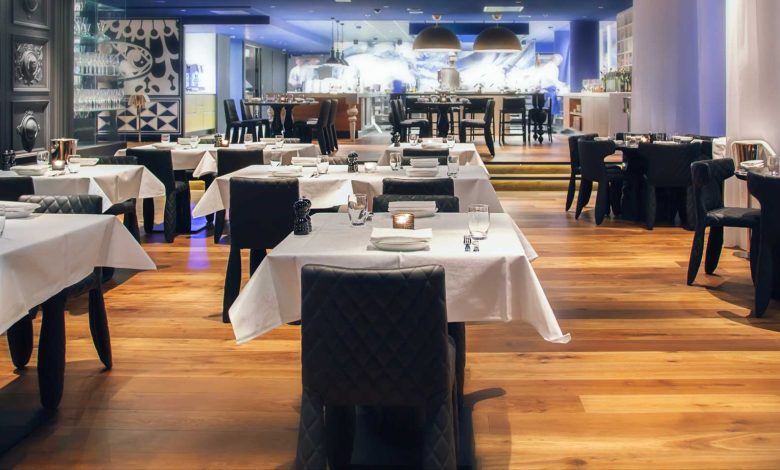How to make a restaurant marketing plan

All successful restaurant marketing choices start with having a good plan. A plan where the steps to follow are analyzed, defined, and structured and contains all the strategies to implement the consolidation of the activity. A document like a treasure map can specify the path to achieving your goals.
We are talking about the restaurant marketing plan. Do you want to know how to structure it? Let’s begin!
We at TheFork believe this is an indispensable tool, especially when competition in catering is increasingly fierce. This is why today we choose to introduce you to how to develop a restaurant marketing plan to get the most out of your restaurant.
What are the benefits of a restaurant marketing plan?
- It allows you to know the details of your business, its limitations, and its strengths to make decisions starting from a real situation, as well as the limitations and potential of the context and all the elements that interact with the restaurant.
- Facilitates the visibility of what you want and the definition of the objectives to be achieved.
- It allows you to have a roadmap with concrete actions, to achieve all objectives even for a long time.
To facilitate the understanding of this process, we begin to develop a marketing plan for a restaurant that we will call Oceano. It is a restaurant located on the seafront of a coastal city of 200 thousand inhabitants, with Mediterranean cuisine and a capacity for 80 seats.
Step 1 – Analyze the market.
Every marketing plan must start with a comprehensive business assessment. An essential step is knowing what we have and don’t—something like an inventory of everything our restaurant has, both inside and out.
In marketing, a tool is used to carry out these analyzes. It is called SWOT, which is the abbreviation of the following elements:
STRENGTHS – the strengths (internal perspective): Differentiating elements for the restaurant. Competitive advantages over the competition.
WEAKNESSES – the weaknesses (internal perspective): Disadvantages of the business compared to the competition: limits and other improved aspects.
OPPORTUNITIES – business opportunities (external perspective): Expanding market niches. Favorable trends. Consumer habits and styles that drive sales.
THREATS – threats to the business (external perspective): Risks due to external factors increase. Tougher competition, more difficult positioning, etc.
– Has an excellent supplier of octopus caught in the same region.
– It is in a great location in a key location for the area, between tourists and city offices
– Its cuisine is “Mediterranean,” with fish and seafood dishes, without any product that differentiates it from the competition.
– Their occupancy rate is low on Wednesdays for lunch and Thursdays for dinner.
– Their brand image and restaurant environment are a bit old-fashioned.
OPPORTUNITIES – the opportunities of the activity
THREATS – the threats to the activity
– A lot of office buildings are under construction in the area.
– The after-work trend is taking hold in the area, and there are more and more managers coming to eat at the restaurant
– It is a very touristic area due to the beach’s proximity, so new restaurants are appearing offering Mediterranean cuisine and seafood.
The competition
Another important step for the SWOT Analysis is to set up a small study on the restaurant’s competition, paying particular attention to:
- Offers and prices offered.
- The type of customer who sits at the tables.
- His weaknesses.
By comparing these characteristics with the same aspects of our restaurant, we can easily obtain the maximum benefits.
In the case of Oceano, the competition is quite strong due to the tourist vocation of the area, whose main attraction is the local fish dishes. As a result, practically all restaurants have the same type of business, serving more or less the same products, and are geared mainly towards tourists.
Here is transforming weakness into an opportunity: Specialization. The Ocean could become a restaurant specializing in a specific area product, exclusive and gourmet such as octopus, for example, due to the good quality of the raw material.
The potential customer
Customers are the raison d’être of restaurants, so it is important to define the profile of the customer we want to attract and retain.
To be able to do this, there are several tools. Today, social networks such as Facebook allow you to obtain detailed information on online customers, tastes, and consumption habits, which is ideal for defining a potential customer profile. Read this article to know more about this topic.
Oceano’s current customers are mostly tourists passing through, making it difficult to obtain loyalty and take advantage of the competition. However, in this case, we have also seized an opportunity due to the increase in the presence of managers and technology companies in the area. A market niche that will look for an exclusive place to eat.
We can therefore focus our Ocean marketing plan on this ideal profile:
- Men and women are aged 30 to 55. Managers, entrepreneurs with medium-high purchasing power, and lovers of fish cuisine.
Step 2 – Define Goals
With all the information gathered so far, we can set goals for our business. In this sense, it is advisable to have a macro objective and more precise objectives that help to understand how to reach the goal. Click here for more information.
As for the goals of our Ocean, a long-term goal is certainly better, and more specific goals with different stages of realization.
General
- Position itself as a restaurant specializing in octopus among the customers employed and managers in the area.
Specifications
- Specialize in octopus;
- Please elaborate on the restaurant’s image to adapt it to the potential customer’s profile.
- Increase bookings on Wednesdays for lunch and Thursdays for dinner.
- Increase online bookings.
Step 3 – The restaurant marketing plan
It is time to define concrete actions to plan our business with clear objectives carefully.
To give you an idea, the main actions of the Ocean marketing plan can be the following:
Changes in the image
- Change the logo, colors, and concept of the restaurant to give it a more elegant and modern touch to capture the potential customer easily.
- Adapt the internal and external environment to this new image.
- Take photographs of the entire offer and image of the restaurant, print new advertising material, and update all digital channels.
- Create new storytelling based on the preferences of new potential customers.
Changes in the gastronomic offer
- Include new recipes with octopus as the main ingredient to maximize specialization.
- Reinventing classic recipes that are always requested, but in this way differentiated from those of the competition.
- Include well-priced side dishes that pair well with the best products.
- Include a menu of specialty drinks, cocktails, and spirits that go with the main ingredient and appeal to area managers.
- Create a new menu with new dishes and new beverages.
Actions of digital marketing
- Activate and improve the attractiveness of two social networks: Twitter (mostly used by managers) and Facebook.
- Create a blog within the website to create and share content on potential customers’ interests and lifestyles.
- Develop a promotional strategy through a competition on social networks to improve Wednesday and Thursday dead times.
Remember that although each floor may change according to the needs and characteristics of the restaurant, the steps mentioned and this fact sheet presented are good starting points for planning any restaurant business.
Read more interesting business, technology, online investing, and app development guides. Visit jetposting.com for more information. You will get a lot of information in one place.



